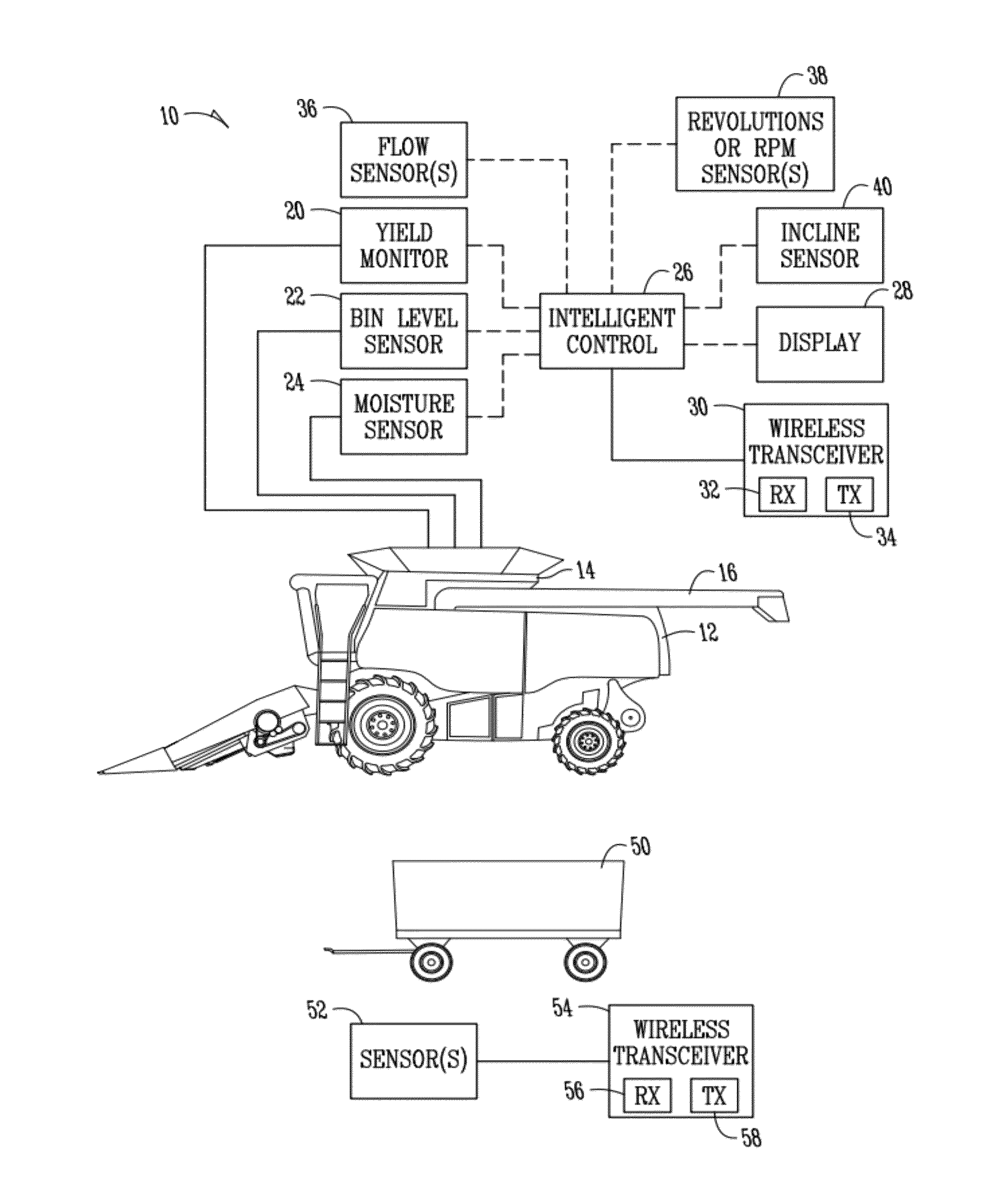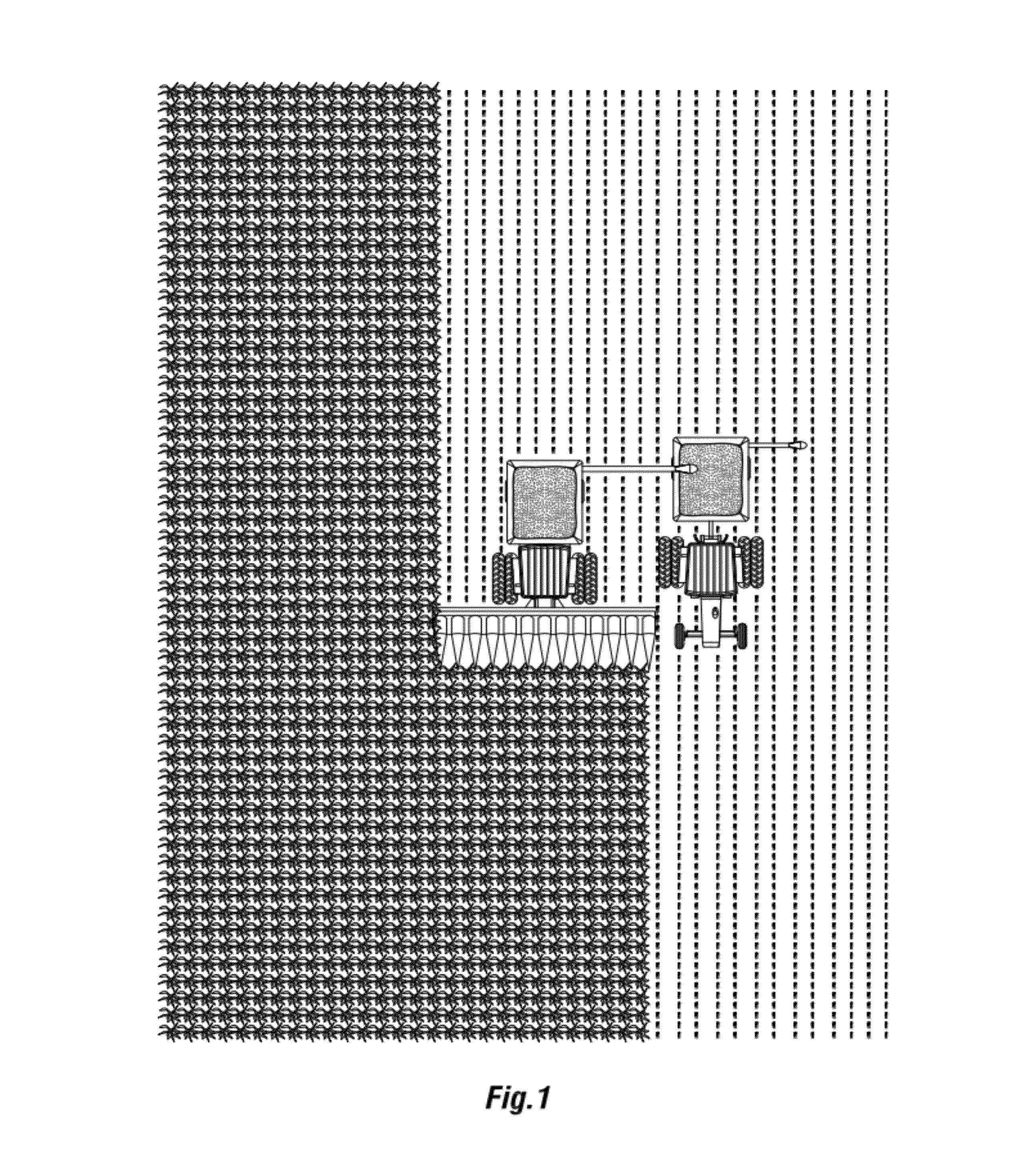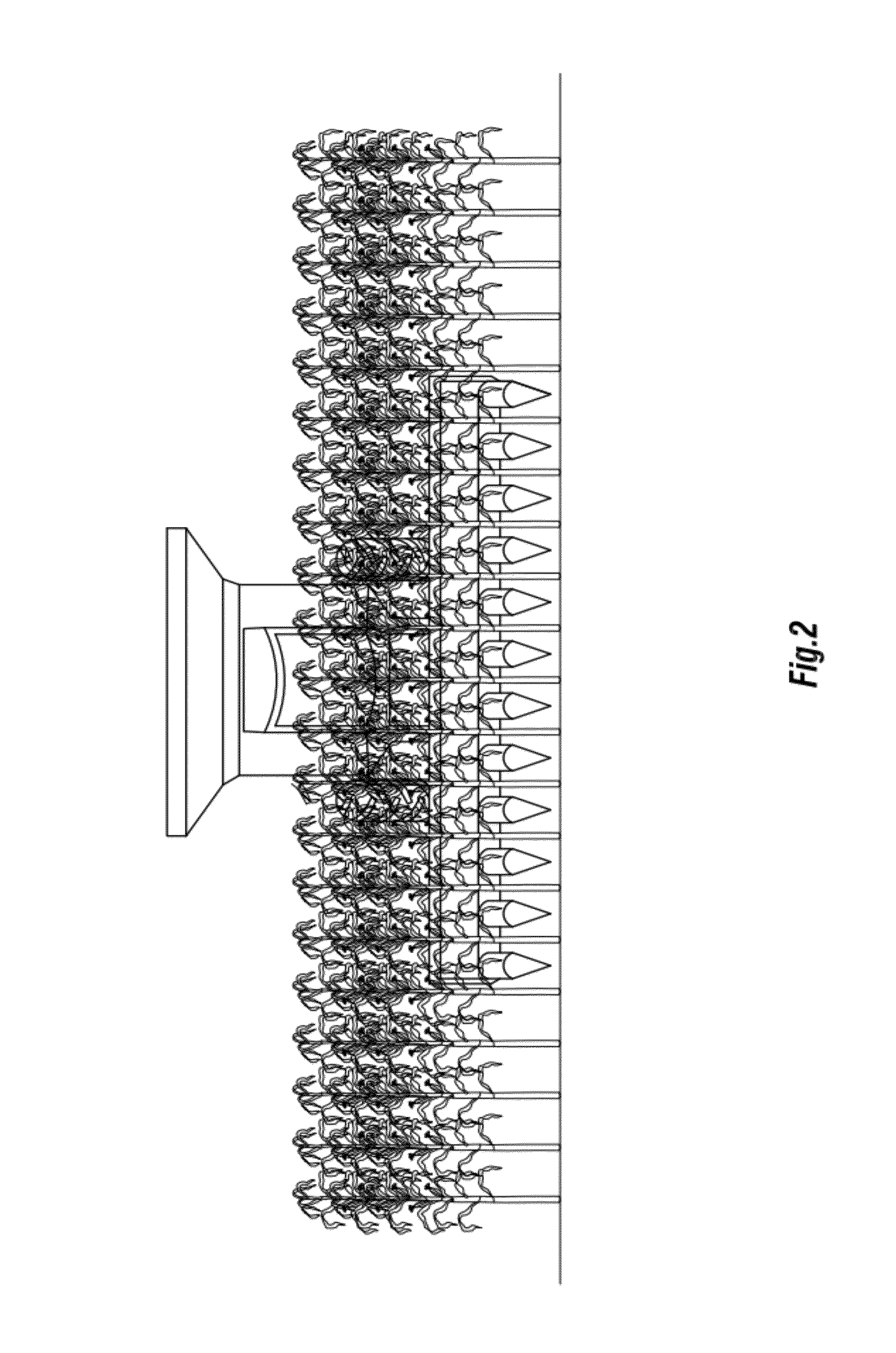Combine bin level monitoring system
a technology of combine bin and level monitoring, which is applied in the field of combine, can solve the problems of difficult to accurately estimate the quantity of grain, time-consuming or wasteful three options, and the combination may become stuck with a full tank and nowhere to go, so as to achieve convenient use, effective and efficient
- Summary
- Abstract
- Description
- Claims
- Application Information
AI Technical Summary
Benefits of technology
Problems solved by technology
Method used
Image
Examples
Embodiment Construction
[0027]Knowing the amount of grain in the combine tank, hereby referred to as “bin level,” in real time is useful for a number of reasons. For example, knowing the amount of grain in the combine tank assists in determining which combine the grain cart should unload first when there are multiple combines harvesting in the same field. The grain cart operator may also factor in how much room is left in the grain cart when deciding which combine to unload. In addition, if the amount of grain in a container, such as a grain cart or truck, is known, the combine operator can determine if the container will hold all the grain in the combine tank. If it cannot, the combine operator may choose to unload into another container that has enough room to hold all the grain in the combine tank. This reduces the time it takes to empty the combine tank, because the combine does not have to move to a second container during the course of unloading.
[0028]Knowing the amount of grain in the combine tank a...
PUM
 Login to View More
Login to View More Abstract
Description
Claims
Application Information
 Login to View More
Login to View More - R&D
- Intellectual Property
- Life Sciences
- Materials
- Tech Scout
- Unparalleled Data Quality
- Higher Quality Content
- 60% Fewer Hallucinations
Browse by: Latest US Patents, China's latest patents, Technical Efficacy Thesaurus, Application Domain, Technology Topic, Popular Technical Reports.
© 2025 PatSnap. All rights reserved.Legal|Privacy policy|Modern Slavery Act Transparency Statement|Sitemap|About US| Contact US: help@patsnap.com



